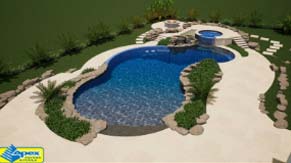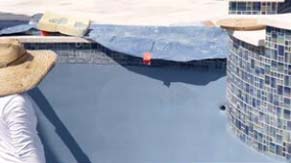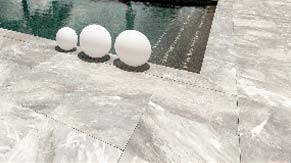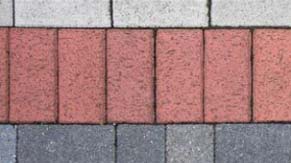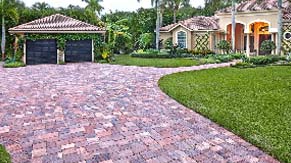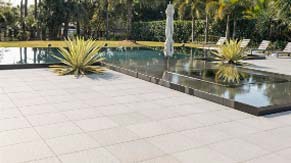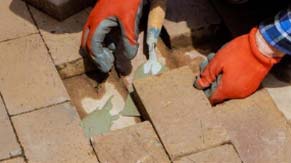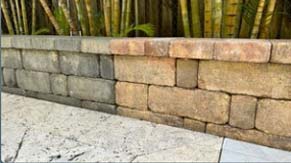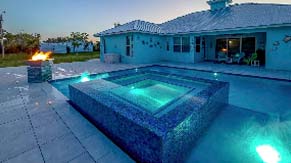Maintaining Optimal Pool Water Levels & Detecting Leaks with the Bucket Test
Maintaining the correct water level in your pool is crucial for its proper functioning and longevity. This class will guide you through understanding normal water loss due to evaporation and, more importantly, how to effectively identify if your pool has a leak using a simple yet highly effective method: the bucket test. Learn to differentiate between natural water loss and a potential leak, saving you time and money on unnecessary repairs.
We'll demonstrate the step-by-step process of setting up and interpreting the bucket test. This involves turning off your pool equipment, marking water levels both inside a bucket and in your pool, and comparing the results after 24 hours. This straightforward test empowers you to accurately assess your pool's water loss and take appropriate action, ensuring your pool remains in top condition.
What You'll Learn in Pool School:
-
The typical amount of water loss due to evaporation in various climates (e.g., Florida).
-
How to accurately perform a simple bucket test to check for pool leaks.
-
Methods for interpreting the results of the bucket test to distinguish between evaporation and a leak.
-
The importance of turning off pool equipment to ensure accurate test results.
-
Practical tips for marking water levels and measuring loss effectively.
Understanding Water Loss: Evaporation vs. Leaks
It's normal for pools to lose some water daily, primarily due to evaporation, splash-out from swimmers, and backwashing. For instance, a typical pool in Florida might lose around a quarter of an inch of water per day, totaling almost two inches a week. However, if you suspect your pool is losing significantly more water than this, it's crucial to investigate for a leak. The bucket test is designed to help you make this distinction accurately.
Step-by-Step Bucket Test Guide
Performing the bucket test is a simple, at-home method to determine if your pool is leaking. Follow these steps for accurate results:
- Prepare the Bucket: Grab a 5-gallon bucket and fill it with pool water.
- Position the Bucket: Place the bucket on a step or sun shelf in your pool, ensuring it's stable and won't float. The water level inside the bucket should be roughly the same as the pool's water level.
- Turn Off Equipment: Crucially, turn off all pool equipment (pump, auto-fill, features) to allow the water to settle and prevent circulation from affecting the test.
- Mark Water Levels: Use tape, a pencil, or a marker to clearly mark the water level inside the bucket. Immediately after, mark the water level on the outside of the bucket, corresponding to the pool's water level.
- Wait 24 Hours: Allow the test to run for 24 hours.
- Interpret Results: After 24 hours, measure the water loss inside the bucket and the water loss in the pool (relative to your marks).
- If both levels dropped by the same amount, your water loss is likely due to evaporation.
- If the pool water level dropped more than the bucket's water level, you likely have a leak.
Pro Tips for the Bucket Test
-
Choose a Calm Day: Perform the test on a day with minimal wind to reduce splash-out and ensure more accurate evaporation readings.
-
Ensure Stability: Make sure the bucket is firmly placed and won't tip over during the 24-hour period.
-
No Auto-Fill: If your pool has an automatic water filler, ensure it is turned off during the test.
-
Accurate Marking: Use a waterproof marker or tape that won't peel off in the water for clear markings.
-
Repeat if Necessary: If results are inconclusive, or you suspect external factors influenced the test, repeat it to confirm.
Key Takeaways
-
Normal water loss is due to evaporation; excessive loss indicates a potential leak.
-
The bucket test is a simple and effective method to diagnose leaks.
-
Always turn off pool equipment during the bucket test for accurate results.
-
Compare water loss inside the bucket (evaporation) with water loss in the pool.
-
A greater drop in pool water level compared to the bucket indicates a leak.
Why Choose Apex Pool School?
With over 20 years of experience in pool maintenance and construction, Apex Pool School offers the most comprehensive and practical pool education available. Our expert-led courses combine theoretical knowledge with hands-on techniques used by professional pool technicians.
Frequently Asked Questions
Here are some common questions about pool maintenance. If you have other questions, feel free to contact us.
The ideal water level for most swimming pools is typically halfway up the skimmer opening. This allows the skimmer to operate efficiently, pulling in surface debris and preventing the pump from sucking air.
It's a good practice to check your pool's water level at least once a week, and more frequently during hot, dry, or windy weather, or if the pool is being used heavily.
Normal water loss occurs due to evaporation, splash-out from swimmers, and backwashing the filter. Excessive or rapid drops in water level can indicate a leak in the pool structure or plumbing.
You can add water to your pool using a garden hose. Place the hose in the skimmer or directly into the pool, ensuring it doesn't damage the liner or plaster. Monitor the level closely to avoid overfilling.


